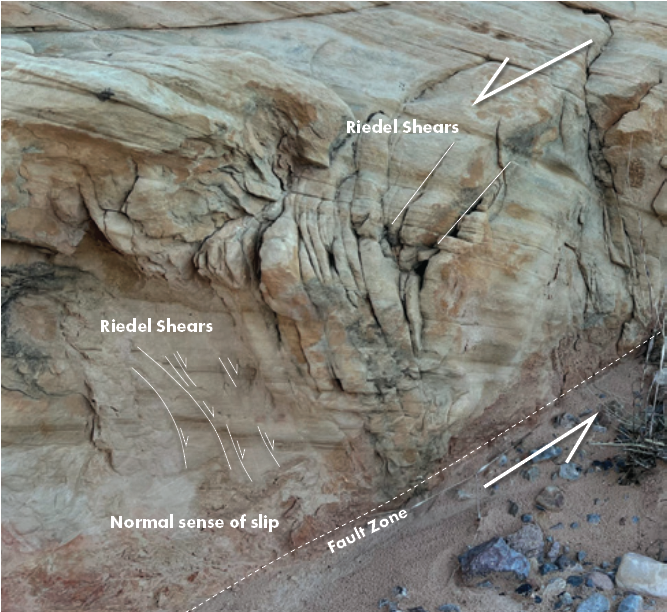In the previous article in this series, we discussed that Riedel shears are commonly the first set of subsidiary faults we see prior to the breakthrough of a master fault.
The photo shows a 3D outcrop view of a strike-slip fault (master fault) and associated Riedel shears. A cross-section view of the Riedel shears shows an extensional sense of offset linking down to the buried master fault in the wash. The orientation of the Riedel shears are about 20° to the master fault.

This slight offset frequently allows Riedel shear faults to be resolved in 3D seismic data where it may be difficult to determine piercing points in the subsurface, which would otherwise allow the interpreter to determine the slip sense. The seismic time slice shows where the en echelon pattern
of Riedel shears can be observed and a cross-section where the faults show normal offset associated with the left-lateral strike-slip faulting.
By determining the slip sense along a strike-slip fault, an interpreter can decipher the paleo-stress history which can then aid in predicting additional faulting and fracturing patterns in a basin. It can also aid in predicting areas of enhanced secondary faulting/fracturing along a master fault. As previously noted, Riedel shears are subsidiary faults to a master fault and should not be used to describe regional fault patterns that occur at various orientations. This is why it is important to understand the paleo-stresses and tectonic history.

